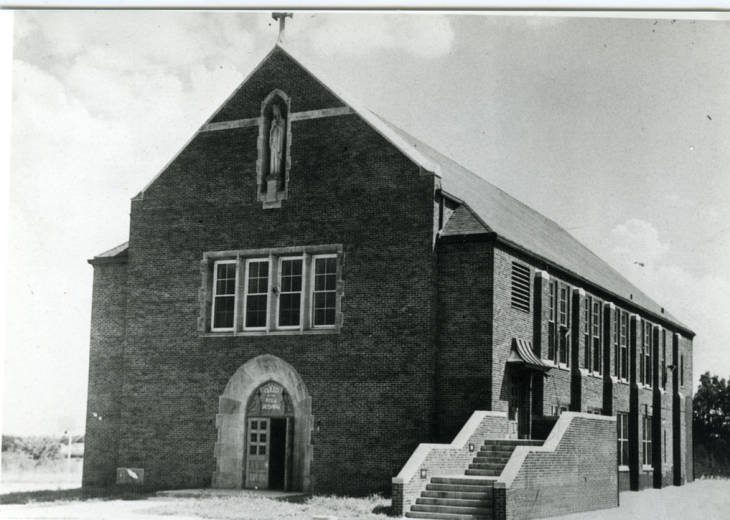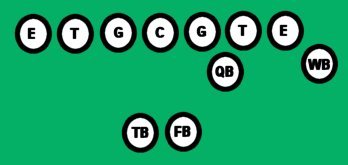7th Grade Football at QHRS Continue reading
My parents moved out of my mother’s parents’ house in Kansas City, KS, in early 1955, when I was in the first grade. They bought a small house in suburban Prairie Village, KS. I attended Queen of the Holy Rosary School in neighboring Overland Park and graduated from the eighth grade in 1962.

School was on the first floor; church on the second. The lot on which we had football practice was in back.
At some point the school started competing in CYO football (combined seventh and eighth grade) and basketball (separate seventh and eight grade teams). I don’t know when football started, but I am pretty sure that there were no basketball teams before I reached the eighth grade. That was the year that the new church was opened, and the old church was transformed into a gymnasium.
My dad and I attended the annual spring sports banquet when I was in sixth grade. I was very excited about playing on the team the next year. I remember two things about that evening. The football team that year had been pretty good. The most valuable player was the quarterback, who would also play that position at my high school, Rockhurst.
The other thing that I remember was that the team needed a coach for the upcoming year. No fathers volunteered, but Al Davis, the coach at Rockhurst, said that he might be able to get a couple of the guys whom he had coached. That is indeed what happened. The Krchma brothers coached us in both 1960 and 1961.
This was real tackle football—eleven on a side, pads, cleats, and helmets. I was so excited when my mom took me to buy my first pair of cleats. The school supplied everything else, well, almost everything. There were no helmets that fit me. My parents had to buy one at a sporting goods store. We painted it the school colors of blue and gold. It looked pretty much like the others, but it was a little less sturdy.
There were nearly 100 students in each class at QHRS by then. So, there must have been at least 90 boys eligible to play in 1960. I doubt that 20 came out for the team. So, quite a few guys had to play both on offense and defense.
The Krchmas installed a single-wing offense, which was several decades out of date in 1960. They did it out of necessity. We could not find eleven decent players for a tee-formation offense. Also, we had no one who could be trusted to throw a pass.

This is the balanced Single-Wing Formation that we used. The center hiked the ball to either the tailback or the fullback.
We had one good player on our team, Al Davis’s son Dave. He must have been either the tailback or the fullback. But maybe not: the league had a rule that prohibited anyone who weighed more than 125 pounds from carrying the ball. That rule is probably the reason that I got to play wingback (WB in the image).
The left side of our line was pitiful. No one could block. So, we ran every play to the right. My usual job was simply to dive at the left knee of the player lined up between me and our right end, my friend Bill Locke. He would then push that guy over me. This technique, called a cut block, is now illegal because when a 250-pound person dives at someone’s left leg while another 250-pound player pushes hard in the opposite direction, bad things happen to the subject’s knee. Not to worry: I weighed less than 100 pounds. Bill was heavier, but not much.
How well did this strategy work? Well, the results could have been better. We played six or seven games against other parochial schools on the Kansas side of KC. We lost every game, and we did not score a point.
Dave Davis was voted our MVP. It was no contest. The rest of us seldom rose to mediocrity.
I do not remember ever touching the ball. I might have. We had a pass play or two, and I was an eligible receiver. The coaches may have been reluctant to use me in that role since they knew that I had 20-420 vision, and I played without my glasses.
We also had a reverse play in which I carried the ball. I am not sure that we ever tried it.
I don’t think that I played defense or returned punts or kickoffs.
I loved it. Wait ’til next year!

Pingback: 1955-1961 Part 5: Events and Activities | Wavablog